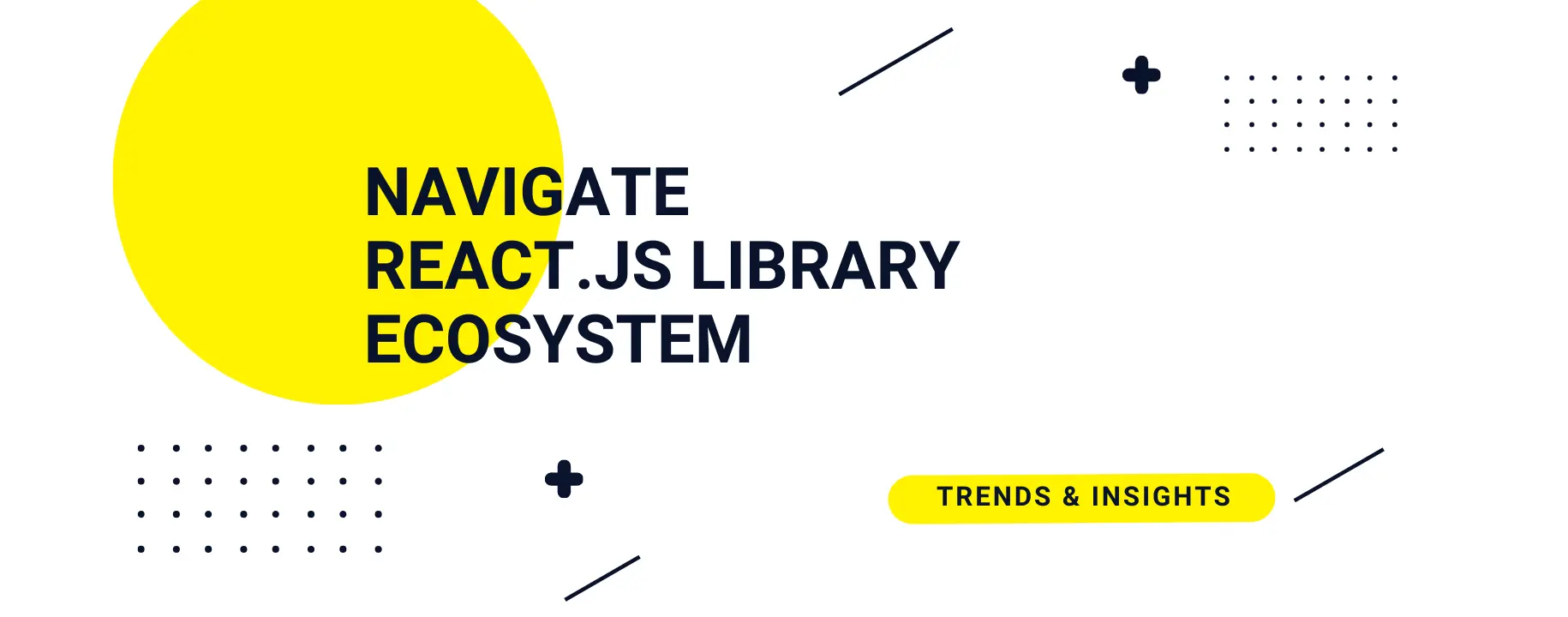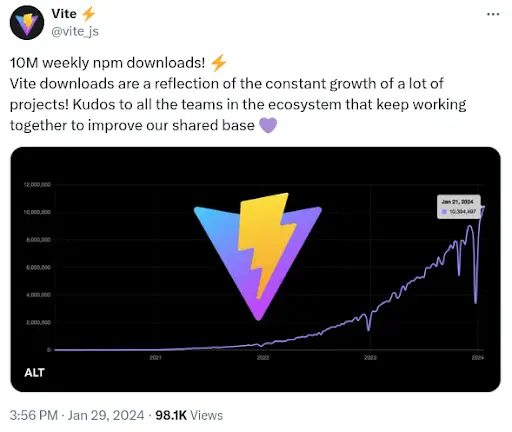- For developers
- Product development
- 16 Apr 2024
Front-End development frameworks: React.js trends and its ecosystem in 2024
This article explores the most important tools and software technology trends.

Table of contents
- React.js trends and its ecosystem in 2024
- Effortless prototyping and project setup
- Mastering state with Redux Toolkit and Zustand
- React Router and TanStack Router
- Advanced Application Styling: Using Tailwind CSS
- Simplifying forms with React Hook Form and Formik
- Testing with Jest, Vitest, and React Testing Library
- Conclusion
Contributors

React.js trends and its ecosystem in 2024
The React ecosystem remains a key resource for web developers, packed with a wide range of tools and libraries suited for various project requirements. From simple prototyping to detailed state management and styling options, React’s flexibility stands out.
This article explores the most important tools and software technology trends, offering a clear path through React’s plentiful resources. It helps you find the best tools for your projects or stay in touch with software development industry trends when preparing for technical interviews.
Effortless prototyping and project setup
Beginners often forget that for quick prototyping, testing ideas, or sharing code snippets, you don’t necessarily have to set up your environment locally. Tools such as CodeSandbox and StackBlitz have transformed how we approach these tasks.
They provide an environment that requires no setup, enabling you to immediately start creating, testing, and sharing React projects directly through your web browser.
As projects move to full-scale development, selecting the appropriate setup is important. Don’t rely on create-react-app for new projects, as it is no longer maintained and has been phased out.
Vite emerges as a superior choice for Single Page Application (SPA) development, celebrated for its templates, rapid server start, and optimized production builds. Vite offers an efficient development experience with features such as instant module reloading, out-of-the-box TypeScript support, and a plugin system that allows for easy integration with a wide array of web development tools.
For applications requiring Server-Side Rendering (SSR), Next.js stands out with its comprehensive SSR framework. It provides features like automatic routing and static site generation (SSG), which simplify the development process for complex applications.
 Source: https://twitter.com/vite_js/status/1751967627482661255
Source: https://twitter.com/vite_js/status/1751967627482661255
Mastering state with Redux Toolkit and Zustand
State management is the cornerstone of React.js library development. Redux Toolkit simplifies state management in larger applications, reducing boilerplate and integrating seamlessly with Redux’s robust ecosystem. For simpler or more minimalist projects, Zustand offers an easy-to-use alternative, focusing on a straightforward and flexible approach to state handling.
For server-side concerns, tools like RTK Query, Tanstack Query (also known as React Query), and Apollo Client provide powerful tools for data fetching, caching, and synchronisation, with Apollo Client being the go-to for GraphQL-based projects and RTK Query for Redux.
 Source: https://github.com/pmndrs/zustand
Source: https://github.com/pmndrs/zustand
React Router and TanStack Router
Routing is essential for SPA navigation, and React Router remains the standard with its dynamic route matching and comprehensive feature set.
TanStack Router presents a lightweight alternative, offering performance and simplicity for projects with streamlined routing needs.
Advanced Application Styling: Using Tailwind CSS
Tailwind CSS appeals to developers looking for a utility-first CSS framework, enabling rapid UI development without the need to write custom CSS. For those preferring CSS-in-JS solutions, Styled Components and Emotion offer powerful libraries for scoped styles and dynamic theming, facilitating highly customizable and maintainable applications.
Front end UI framework & UI Kits
UI component libraries like Material UI, Ant Design, Chakra UI, and Mantine provide pre-built components that accelerate development. Headless front end UI frameworks are gaining popularity; they focus on accessibility and flexibility, offering unstyled components for projects requiring custom designs.
Animations
React Spring and Framer Motion enable developers to add sophisticated animations to React applications, improving user interaction and engagement through smooth and natural motion.
Simplifying forms with React Hook Form and Formik
Form management is streamlined with libraries such as React Hook Form and Formik, which reduce the complexity of handling forms, performing validation, and managing submissions, thereby enhancing both development efficiency and user experience.
In 2024, React Hook Form emerged as the preferred choice because it requires less boilerplate code compared to Formik.
Testing with Jest, Vitest, and React Testing Library
Testing ensures application reliability and performance. Jest offers a comprehensive solution for unit testing, while Vitest emerges as a fast alternative leveraging Vite.
For component testing, the React Testing Library encourages practices that ensure maintainability and user-focused testing.
Conclusion
The React ecosystem in 2024 shows how much the community values new ideas and quality.
With a lot of tools and the best frontend libraries at their disposal, developers are well-equipped to tackle any project, from simple SPAs to complex, large-scale applications.
By leveraging the right combination of tools for setup and the best frontend libraries, state management, styling, and testing, developers can craft applications that are not only functional and beautiful but also robust and user-friendly.
This guide aims to illuminate the path through the vast landscape of React development, empowering developers to make informed choices and create exceptional web experiences.
Latest blog posts
View all postsSaaS development vs. traditional software development: Key Differences

Diana
22 August 2024Digital product discovery process for product owners [Guide]

Diana
14 August 2024